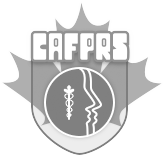When it comes to facial rejuvenation, few procedures are as transformative as a facelift. Yet not all facelifts are the same. Two of the most commonly discussed techniques — the traditional (SMAS) facelift and the deep plane facelift — differ in how they restore youthful contours and natural movement. Understanding these distinctions can help you make an informed, confident decision about your treatment options.
What Is a Traditional Facelift?
A traditional facelift, sometimes referred to as an SMAS facelift, focuses on the outer layers of facial tissue. During this procedure, the surgeon lifts and tightens the superficial musculoaponeurotic system (SMAS) — the layer of muscle and connective tissue beneath the skin — before redraping the skin for a smoother, firmer appearance.
This approach is ideal for patients with mild to moderate sagging around the jawline, cheeks, and neck. It effectively smooths jowls, reduces skin laxity, and restores a youthful profile without drastically altering your natural features.
Benefits include:
- A more defined jawline and neck contour
- Reduced wrinkles and folds in the lower face
- Shorter operative and recovery time
However, because the deeper ligaments and fat pads are not repositioned, a traditional facelift may not fully rejuvenate the midface or cheek area. In some cases, it can also result in a slightly tighter appearance if too much tension is applied to the skin.
What Is a Deep Plane Facelift?
The deep plane facelift represents the next evolution in facelift surgery. Rather than tightening the SMAS layer separately, the surgeon lifts the skin and SMAS together as one unit, releasing key retaining ligaments in the deeper facial layers. This allows for a more comprehensive repositioning of the cheeks, nasolabial folds, jawline, and neck.
Because this technique operates beneath the SMAS, it preserves the natural facial tension and blood supply, leading to a softer, more natural result that lasts longer than traditional approaches.
Benefits include:
- Enhanced midface lift (cheeks and nasolabial folds)
- More natural and youthful movement of facial expressions
- Long-lasting results that can endure 10–15 years or more
- Minimal risk of a “pulled” or “windblown” look
The deep plane facelift requires advanced surgical training and anatomical expertise, making it essential to choose a board-certified facial plastic surgeon with extensive experience in this specialized technique.
Comparing the Two Techniques
| Feature | Traditional (SMAS) Facelift | 6txDeep Plane Facelift |
| Depth of Lift | Skin + SMAS | Skin + SMAS + deeper ligaments |
| Midface Improvement | Moderate | Excellent |
| Result Longevity | ~7–10 years | ~10–15+ years |
| Recovery Time | 2–3 weeks | 3–4 weeks |
| Appearance | Can appear tighter | Soft, natural, youthful |
| Technical Complexity | Moderate | Advanced |
Which Facelift Is Right for You?
Choosing the right facelift is a deeply personal decision. If your concerns are limited to early sagging and mild jowls, a traditional facelift may be sufficient to address these issues. If you’re seeking a more comprehensive, natural rejuvenation that restores cheek fullness and definition to the entire lower face, a deep plane facelift offers unparalleled depth and artistry.
During your consultation with Dr. Ashlin Alexander, your facial structure, tissue quality, and goals will be carefully assessed to determine the most suitable approach for your needs. Every face tells a different story — and your facelift should reflect that individuality.








